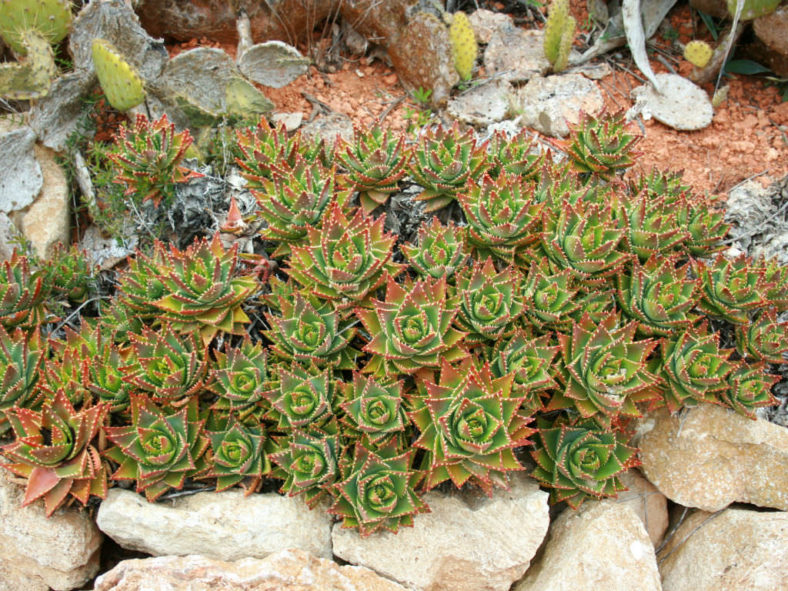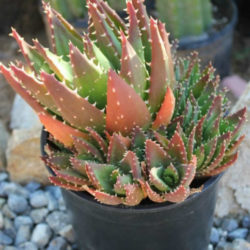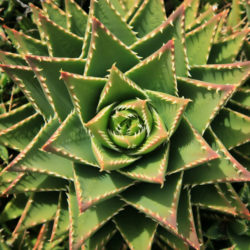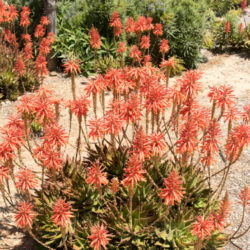Scientific Name
Aloe × nobilis Haw.
Common Name(s)
Gold Tooth Aloe, Golden Toothed Aloe
Synonym(s)
Aloe nobilis
Scientific Classification
Family: Asphodelaceae
Subfamily: Asphodeloideae
Genus: Aloe
Description
Aloe × nobilis is a small succulent that forms rosettes of fleshy, broadly triangular leaves with white to yellow, sharp but flexible teeth along the margins. It grows up to 12 inches (30 cm) tall and offsets profusely, creating a mound that can reach 4 feet (1.2 m) in diameter. The fleshy, green leaves can turn orange or rose when stressed or in full sun.
The branched inflorescences bearing racemes of bright orange flowers rise about 2 feet (60 cm) above the foliage in mid-summer.
Origin
Aloe × nobilis is thought by some to be a hybrid that results from a cross between Aloe mitriformis (Aloe perfoliata) and Aloe brevifolia. In contrast, others believe it is a cross between Aloe mitriformis and Aloe distans or Aloe arborescens. This plant is commonly used in landscaping and is often named Aloe nobilis. It is frequently confused with Aloe perfoliata itself but can be distinguished by its much smaller rosettes and its usually light green leaves.

Hardiness
USDA hardiness zone 9b to 10b: from 25 °F (−3.9 °C) to 40 °F (+4.4 °C).
How to Grow and Care
Aloes are very forgiving plants. However, as with all succulents, they must never be allowed to sit in stagnant water, and the plant should be carefully monitored to watch for signs of overwatering.
Aloes are not particularly fast-growing and will only rarely need repotting. Repot plants in the spring that are tipping over their pots or have ceased growing. Use a fast-draining potting mix with one-third of sand or pebbles. When repotting a larger plant, dividing the root ball carefully is possible. Some kinds of Aloe will send off offsets that can be potted independently.
It needs an intense, bright light. They can withstand full summer sun once acclimated. In the winter, provide bright light. It prefers warmer temperatures of 70 to 80 °F (21 to 27 °C) but will survive down to 40 °F (4.5 °C). Feed with a cactus fertilizer in the summer only. Suspend feeding in the winter as the plant goes dormant.
See more at How to Grow and Care for Aloe.
Hybrids
Links
- Back to genus Aloe
- Succupedia: Browse succulents by Scientific Name, Common Name, Genus, Family, USDA Hardiness Zone, Origin, or cacti by Genus


